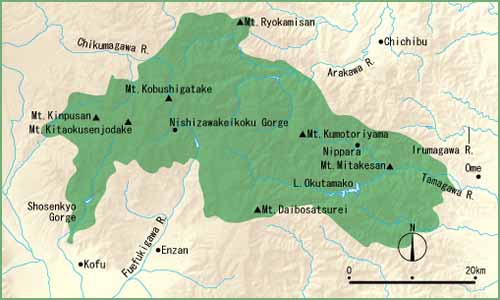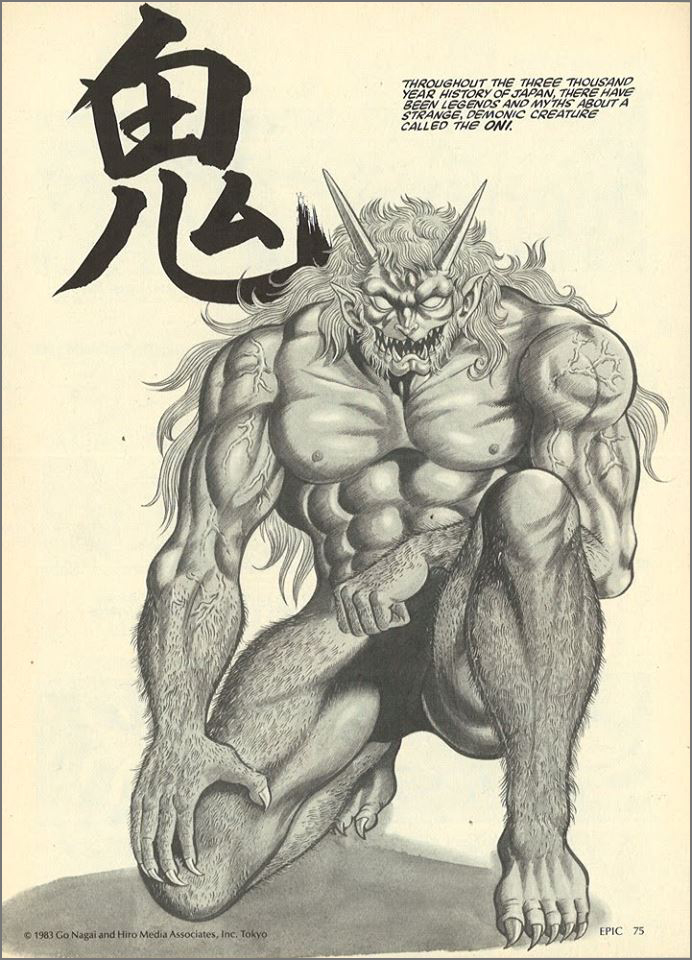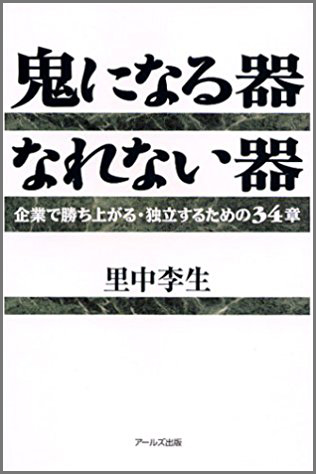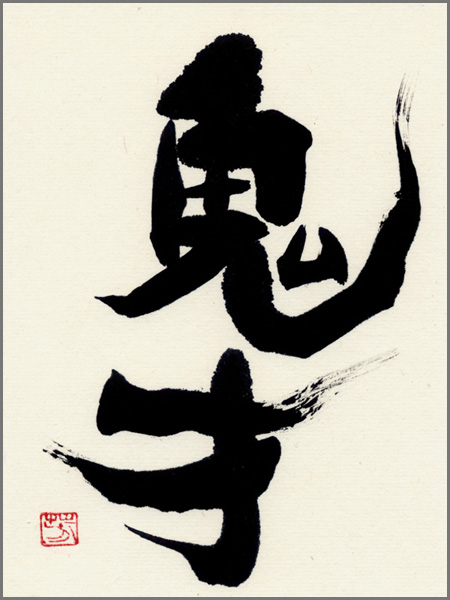[ . BACK to DARUMA MUSEUM TOP . ]
. Tengupedia - 天狗ペディア - Tengu ABC-Index .
- for Oni from Chichibu, see below.
:::::::::::::::::::::::::::::::::::::::::::::::::::::::::::::::::::::::::::::::::::::::::::::::::::::::::::::::::::::::::::::::::::::::::::::::::::::::::::::::::::::::::::::::::::
Chichibu no Tengu 秩父の天狗さま The Tengu from Chichibu
Saitama 埼玉県
 - Chichibu-Tama-Kai National Park -
- Chichibu-Tama-Kai National Park -
The mountainous Chichibu region of Saitama is close to Tokyo, yet full of local lore and color.
. Chichibu Yomatsuri 秩父夜祭 Night Festival .
. Mitsumine Jinja 三峰神社 Shrine and Wolf Legends .
.......................................................................
 - quote
Chichibu - By Sumiko Enbutsu
- quote
Chichibu - By Sumiko Enbutsu
Tengu Matsuri in November
O-Tengu-Sama (Folk Kabuki) at Kidama Jinja, Tsuyagi
Tengu-ya (noodle shop)
..... Legends abound in rural areas of mysterious happenings attributed to Tengu: chopping sounds at midnight, as if trees were being felled .....
- source : books.google.co.jp/books
:::::::::::::::::::::::::::::::::::::::::::::::::::::::::::::::::::::::::::::::::::::::::::::::::::::::::::::::::::::::::::::::::::::::::::::::::::::::::::::::::::::::::::::::::::
In Chichibu, the Tengu is seen as a
mountain deity, Tengu-Shin 天狗神 Tengu-Kami, Tengu God.
- quote -
A later version of the Kujiki (? Kojiki), an ancient Japanese historical text, writes the name of
Amanozako,
a monstrous female deity born from the god Susanoo's spat-out ferocity, with characters meaning
tengu deity (天狗神).
The book describes Amanozako as a raging creature capable of flight, with the body of a human, the head of a beast, a long nose, long ears, and long teeth that can chew through swords. An 18th-century book called the Tengu Meigikō (天狗名義考) suggests that this goddess may be the true predecessor of the tengu, but the date and authenticity of the Kojiki, and of that edition in particular, remain disputed.
- source : wikipedia -
Amanozako 天逆毎(あまのざこ)Goddess of Tengu
- quote -
... she is a female, she is a god, she has a son. Her nicknames reveal how rare those things are:
metengu (woman tengu) and
tengu kami (tengu god) refer specifically to her; i.e. there aren’t really other female tengu or tengu gods besides her.

I also think she is interesting because while most tengu are considered to be malicious demons lurking in the forests, she is actually revered as a goddess. While it isn’t terribly uncommon to see shrines dedicated to tengu or small tengu cults (think of Sojobo from a few days ago), Amanozako’s story is special in that she interacts with the other gods in heaven. Her myths are not self-contained stories, but play off of the larger pantheon. She was supposedly born out of a chunk of spit and gall that the temperamental storm god, Susanoo, vomited up. Most tengu don’t have that as a claim to fame!
- source : yokai.com/amanozako -
:::::::::::::::::::::::::::::::::::::::::::::::::::::::::::::::::::::::::::::::::::::::::::::::::::::::::::::::::::::::::::::::::::::::::::::::::::::::::::::::::::::::::::::::::::
. reference by Toyota Toki とよた 時 / 画房【とよだ 時】 Toyoda Toki .
Manga Painter of Satoyama Japan
In Chichibu, the Tengu is seen as a mountain deity, Tengu-Shin 天狗神
Tengu-Kami.
Kokushidake no Tengu-Iwa 国師岳の天狗岩 Tengu Rock, Tengu Boulder
奥秩父 Oku-Chichibu
Mount Kokushidake is 2591 m high.
Oku Chichibu is located along the border of Saitama, Yamanashi and Nagano. Connecting Nagano and Chichibu is the pass Oodarumi Tooge 大弛峠 Odarumi Pass.
Near Kokushidake is the Tengu One 国師ヶ岳天狗尾根
"Tengu Mountain Ridge", with the Tengu Rock formation. In former times there was the Oku no In Mountain Shrine of 大岳山那賀都神社
Daidakesan Nagato Jinja from Yamanashi (former 三富村 Mitomimura). On top of the rocks is an iron sword, the ご神体 image of the deity.
The formation of the rocks is said to look just like the profile of a Tengu, with a long nose.
Mount Kokushidake was named after priest Musoo Kokushi 夢窓国師
Muso Kokushi.
Around 1330 Muso Kokushi stayed in Yamanashi, 塩山 Enzan at the temple 乾徳山恵林寺
Erin-Ji to make a temple garden (he was a specially gifted garden designer).
The mountain name 大岳山 Daidakesan (Oodakesan) also refers to him.
. Muso Kokushi Soseki 夢窓疎石 (1275 - 1351) .

The deity venerated at this mountain peak is 大山祇神 (おおやまづみのかみ
Ooyamazumi no Kami.
. - Ooyamatsuminomikoto 大山祇神, 大山積神, 大山津見神 Oyama Tsumi no Mikoto .
The peak is also venerated by Buddhists, who chant the following when climbing the mountain to pray for good business and protection of the silk industry:
南無大岳那賀都の神社、大山の神、高岡の神、六根清浄.
Namu Daidake Nagato no Jinja , Oyama no Kami, Takaoka no Kami, Rokkon Shojo.
 - reference : toki.moo.jp/gaten/251-300/gate264 -
- reference : toki.moo.jp/gaten/251-300/gate264 -
.......................................................................
nokkinboo 破風山のノッキン坊天狗 Nokkinbo Tengu, Nokkin-Bo
ニョッキンボウ Nyokkin-Bo
at Mount Happusan 破風山, 601 m high, Mount Happu, Minano, Saitama.

At the temple 水潜寺 Suisen-Ji, Nr. 34 of the Chichibu Pilgrimage to 34 Kannon Temples, Nokkin-Bo Tengu is venerated as a protector deity.
Nokkin-Bo is ibo no Kami イボの神, a deity to take away warts. The local people came here to worship, bringing some Sake rice wine in bamboo containers. Even nowadays, a lot of "Cup Sake" is offered here.
. 秩父三十四観音霊場 Pilgrimage to 34 Chichibu Kannon Temples .
. ibotori 疣取り / イボ取り / いぼとり take away warts .
ibogamisan いぼ神さん Shinto deity to take away warts / ibotori san いぼとりさ
- reference : toki.moo.jp/inaka-jo/04tengu/15chichib -
- - - - - Closely related to Knokkin-Bo is
.......................................................................
Ryookamisan no Tori Tengu 両神山の刀利天狗 Ryokamisan
Mount Ryokamisan, at the northern end of the Okuchichibu Mountains, is 1,723 m high.
Until recently, women were forbidden to climb this sacred mountain up to the Shrine at its top.

Legend knows that En no Gyoja was the first to climb up here.
Ryookami means "two deities". Here they are
イザナギ(伊弉諾)
Izanagi and イザナミ(伊弉冉
Izanami.
. Izanagi 伊弉諾 - 伊弉冉尊and Izanami 伊邪那美命 .
Also known as 八日見山
Yokamiyama, 竜頭山
Ryukamiyama (Dragon Head) and 鋸岳 Nokogiridake.
The name Yokamiyama dates back to Yamato Takeru, who 見 looked this mountain for 八日 eight days when he climbed Mount Tsukuba .
. Yamato Takeru 日本武尊 - Introduction .
The name Ryukami is a pun on the writing 竜神 Dragon God. This deity is known for its eight heads ヤオカミ Yaokami - Yokami.
This mountain is also related to the Tengu
. 六尺坊 Rokushakubo, Rokushaku-Bo .
from Mount 御嶽山 Ontakesan in Kiso.
Other Tengu who live here are
前山 - 三笠山 刀利天坊 Mikasayama - Toriten-Bo
前山 - 八海山 大頭羅坊 Hakkaisan - Daizura-Bo
(摩利支天山 Marishiten Yama) on 阿留摩耶山 the peak Arumayasan アルマヤ坊 Arumaya-Bo
- reference : toki.moo.jp/inaka-jo/04tengu -
.......................................................................
Ryookami Jinja 両神神社 Ryokami Shrine
About half-way up to the summit.
 source and more photos : ridgelineimages.com/hiking...
source and more photos : ridgelineimages.com/hiking...
:::::::::::::::::::::::::::::::::::::::::::::::::::::::::::::::::::::::::::::::::::::::::::::::::::::::::::::::::::::::::::::::::::::::::::::::::::::::::::::::::::::::::::::::::::
. Legends and Tales from Japan 伝説 - Introduction .
Tengoo matsuri 天狗祭(テンゴー祭り) Tengo (Tengu) Festival
Tengu is seen as yama no kami 山の神 a Deity of the Mountain
During the festival people pray for safety while working in the mountain forest and blessings for the family.
The main actors of this festival are children.
原の天狗まつり Hara no Tengu Matsuri
秩父市荒川白久(原区)地内 In Hara village

This festival was held in many parts of Chichibu, but now only in the Hara village.
The young boys collect wood, bamboo and leaves to prepare for a huge ritual bonfire.
The sounds of the huge fire,
パチパチ、パンパン、バリバリ
pachi pachi, pan pan, pari pari
The Tengo sama is venerated as Hibuse no Kami 火防の神 Deity to prevent fire, also as the Yama no Kami 山の神 Deity of the Mountain and the pillow of this Tengo is on top of the mountain.
- reference source : navi.city.chichibu.lg.jp -
..............................................................................................................................................
There are a few legends about sacred trees where the Tengu sits and takes a rest -
Tengu no matsu 天狗の松, Tengu no koshikake matsu 天狗の腰掛松 .
People protect these trees and dear not cut them down for fear of bad luck and misfortune.
For example in Chichibu town, Higashi-Chichibu, Ogano, ...
Tengu no yasumi no ki 天狗の休み木 A tree where the Tengu takes a rest
Along the pass 烏首峠
Torikubi Toge, which connects 名栗 Naguri with 浦山 Urayama in Chichibu there is 大楓 a
huge maple tree where the Tengu takes a rest.
When the forest workers cut it down, there begun a lot of accidents to happen, a wood cutter fell ill and eventually even the man who bought the lumber was hit with bad luck.
. Tengu to matsu 天狗と松 Legends about the Tengu pine .
 天狗松の祠堂 Amulet from the Tengu-Matsu hall
天狗松の祠堂 Amulet from the Tengu-Matsu hall
富山市田村町 Toyama town, Tamura village
.......................................................................
Until the end of WWII, the Tengu were still quite acitve in Chichibu.
At night, people heard the sounds of someone cutting trees in a valley or rolling boulders around a river. When they looked the next morning, all was the same as before ant not one tree felled.
When the Tengu got angry, he would cause fires and make strange noises. Even his horrible laughter could be heard.
The wood workers and fishermen would offer ritual Sake to the Tengu before starting to work.
Once a worker said something bad about the Tengu, but on this day he fell into a ravine and hurt himself.
.......................................................................
At the back of Shrine 和田神社
Wada Jinja was a sanctuary for the 愛宕様 Atago Deity, the 山の神 God of the Mountain.
Once a young man went up there on the 17th night of the second lunar month to meet the Tengu. He saw his huge legs, but could not see the head.
.......................................................................
Tengu-Iwa 天狗岩 and Waterfall

There was a Tengu Boulder near the waterfall 七代の滝
Nanayo no Taki, where a Tengu lived. Once a priest from the nearby temple used it to pee.
If the visitors in his temple wanted to eat Tofu from Tokoy, the Tengu went off to fetch it in no time.
.......................................................................
kawatengu 川天狗 Tengu becoming a River
A huge flood in the region is called Kawa Tengu.
Once during a huge flood the sacred tree for the Tengu was swept away and something red could be seen floating downwriver. Even a huge boulder floating down was split into two, took the shape of two Tengu and was washed away in no time.
- - - - - And a legend from 大滝村
Otaki village
Once a farmer threw his net into the pond at the bottom of the waterfall and caught about 15 trout fish. When he thew his net a second time, be pulled out a sparkle of silver light and a fearful loud voice from the bottom of the pond shouted:
"The first time I forgive you , but a second time is not allowed!"
This time the Kawa Tengu, the River Tengu was angry. (In other legends, the "Kawa Tengu" is seen as a Kappa.)
. kawatengu, kawa-tengu, kawa tengu 川天狗 "river Tengu" .
..............................................................................................................................................
東秩父村
Higashi Chichibu
Once upon a time
the Tengu from 武甲山 Mount Bukozan (Bukosan, Mount Buko 1,304 m) and 笠山 Mount Kasayama (837 m) competed about the hight of their mountains.
The Tengu from Bukozan scooped water in a barrel and let it flow toward Kasayama. The angry Tengu from Kasayama took a traveler's hat (kasa 笠), placed it below the barrel and let the water flow back to Bukozan.
Once upon a time
the villagers from 白石 Shiraishi were re-doing a roof with reeds, because when it rained, the roof was leeking. So they kept busy cutting reeds. Just at that time in a nearby farm house, they had just put up reeds for drying. And then - what do you know - in one night all the reeds were over to the neighbour's roof, while they heard strange sounds, ガヤガヤ gayagaya al night.
Next morning the farmer wanted to get his reeds back, but then he realized that only a Tengu could do all that work in one night and returned home in fear.
.......................................................................
倉尾村
Kurao
The Tengu from Kurao
often launch a firework from their rock called 天狗岩
Tenguiwa. But it does not make a sound at all, just beautiful colors like chrysanthemums in the sky.
Once upon a time
a woodworker slipped and fell in a ravine, but a Tengu caught him and helped him.
Once upon a time,
a young man was kidnapped by the Tengu. After three years he came back, but he could do nothing, only blowing the flute.
Once upon a time
a farmer went harvesting rye and took his son with him. But the son was kidnapped by the Tengu. They later found him asleep under a tree, remembering nothing.
Once upon a time
a farmer heard the sound of voices, ホイホイ hoihoi, cutting down a tree. The next morning he found his saw broken.
.
yama no kami 山の神 -
Tengu Matsu Pine
Near the Shrine are some trees with abnormal appearance, too thick or very bumpy. They are also called yama no kami no ki 山ノ神の木
"Trees of the Mountain Deity".
.......................................................................
皆野町
Minano
Once a young boy did not come home from school. At night they all went out to search for him they found him on the largest tree, high up in the branches.
.......................................................................
小鹿野町
Ogano
- Tengu no iwa 天狗の岩
Tengu Rock / Tengu boulder
Once upon a time
a skilful fisherman and woodworker lived in the village. One day he forgot to offer ritual Sake to the Tengu before starting to work. He even said something bad about the Tengu.
While he was busy, the sky suddenly turned dark with clouds and rumbling. Then a huge boulder came falling from the sky and burried everything under it, the workers and the lumber - such is the revenge of the Tengu.
Once upon a time
the village temple went out of business and the 釣り鐘 temple bell was given to the pawn shop. It was sold to another village, where soon a fire started. The local fortune teller said it was the temple bell bringing bad luck, so it was given back. This legend is called
Tengu-sama no tsurigane 天狗様の釣り鐘 the Temple bell of the Tengu.
. bonshoo 梵鐘 Bonsho, temple bell - Introduction .
.......................................................................
大滝村
Otaki
tengusama no ki 天狗様の木 The tree of the Tengu
When they cut it down, blood was flowing from the cut.
.......................................................................
両神村
Ryokami village
kamikakushi 神かくし kidnapped !
A little girl of 3 years went to the mountain forest with her mother, but the girl lost her way. She was found 3 days later, more than 4 km away. She must have walked a way impossible to walk for such a yuong girl, so they say she was kidnapped by a Tengu.
.......................................................................
寄居町
Yorii
yama no kami 山の神 - 天狗松 Tengu-Matsu
At the pass toward Higashi-Chichibu village, the Deity of the Mountain is venerated at the Tengu Pine.
But one day the huge tree was to be cut down. But however much they hacked at it, it would not fall. So the workers rested for a while. While they sat down, the tree fell on them all by itself and hurt the workers badly. This was the curse of the Mountain God.
 source : choichi.cocolog-nifty.com/blog...
source : choichi.cocolog-nifty.com/blog...
Tengu-Matsu at 牛伏山 Ushibuseyama, Gunma
.......................................................................
吉田町
Yoshida
Once upon a time, it was customary for the local craftsmen to drink a cup of the when they had finished work and were on their way home.
There was one 畳屋 Tatami straw mat maker, who went home without drinking his tea.
After walking for a short while, he heard the sound of cutting wood and it became so dark he could not see the road. Unable to proceed he went back to borrow 提灯 a lantern.
The home owner told him this was the trick of the local Tengu. When he walked back again, it was so light, he almost did not need a lantern.
..............................................................................................................................................
- reference : nichibun yokai database 妖怪データベース -
:::::::::::::::::::::::::::::::::::::::::::::::::::::::::::::::::::::::::::::::::::::::::::::::::::::::::::::::::::::::::::::::::::::::::::::::::::::::::::::::::::::::::::::::::::
. Onipedia - 鬼ペディア - Oni Demons - ABC-List - Index - .
- - - - - Chichibu no Oni 秩父の鬼 Demon Legends from Chichibu - - - - -
.......................................................................
東秩父村
Higashi Chichibu
Once an Oni went to the village to catch a human to eat. He shape-shifted into a woman and tried to seduce a man, but the man held on to the branche of a tree and finally escaped.
When the Oni realist his pray was gone, he went right after him. But at the home of the man it smelled like 菖蒲とよもぎ iris and mugwort. The Oni can not stand this smell and run off very fast.
During the celebrations for 端午の節句 Setsubun, the Boy's Festival on March 5 people hang Iris and Mugwort from the eaves of their roofs to ward off the Demons.
. oni wa soto 鬼は外 "Demons, get out!" - Setsubun .
.......................................................................
小鹿野町
Ogano
Once in the deep mountains there lived a strong Oni. Every day he came down to the village and caused trouble, scolding the priest and digging up the fields.
The priest consulted with the cleverest men in the village, about what to do. They found a ruse, telling the Oni that humans were much stronger than he and eventually the Oni left.
(This legend is also told in other villages.)
..............................................................................................................................................
Oni yarai 秩父神社の鬼やらい Driving out the Demons at Chichibu Shrine - Setsubun
. Onibabari 鬼払い driving out the demons, .

..............................................................................................................................................
 秩父の鬼うどん Chichibu no Oni Udon Noodle Restaurant / 定峰峠の鬼うどん
秩父の鬼うどん Chichibu no Oni Udon Noodle Restaurant / 定峰峠の鬼うどん
Chichibu District, Higashichichibu, Shiroishi, 333 - Sadamine Toge Pass
:::::::::::::::::::::::::::::::::::::::::::::::::::::::::::::::::::::::::::::::::::::::::::::::::::::::::::::::::::::::::::::::::::::::::::::::::::::::::::::::::::::::::::::::::::
. . . CLICK here for Photos !
- reference - 秩父 天狗-
- reference - tengu from chichibu -
:::::::::::::::::::::::::::::::::::::::::::::::::::::::::::::::::::::::::::::::::::::::::::::::::::::::::::::::::::::::::::::::::::::::::::::::::::::::::::::::::::::::::::::::::::
 . - - - Join my Tengupedia friends on facebook ! - - - .
. - - - Join my Tengupedia friends on facebook ! - - - .
:::::::::::::::::::::::::::::::::::::::::::::::::::::::::::::::::::::::::::::::::::::::::::::::::::::::::::::::::::::::::::::::::::::::::::::::::::::::::::::::::::::::::::::::::::
. Tengu 天狗と伝説 Tengu legends "Long-nosed Goblin" .
. - yookai, yōkai 妖怪 Yokai monsters - .
. Legends and Tales from Japan 伝説 - Introduction .
. Mingei 民芸 Regional Folk Art from Japan .
:::::::::::::::::::::::::::::::::::::::::::::::::::::::::::::::::::::::::::::::::::::::::::::::::::::::::::::::::::::::::::::::::::::::::::::::::::::::::::::::::::::::::::::::::::
[ . BACK to DARUMA MUSEUM TOP . ]
[ . BACK to WORLDKIGO . TOP . ]
- #chichibutengu #kawatengu #tenguiwa #tengutsurigane #tengumatsu -
:::::::::::::::::::::::::::::::::::::::::::::::::::::::::::::::::::::::::::::::::::::::::::::::::::::::::::::::::::::::::::::::::::::::::::::::::::::::::::::::::::::::::::::::::::







































